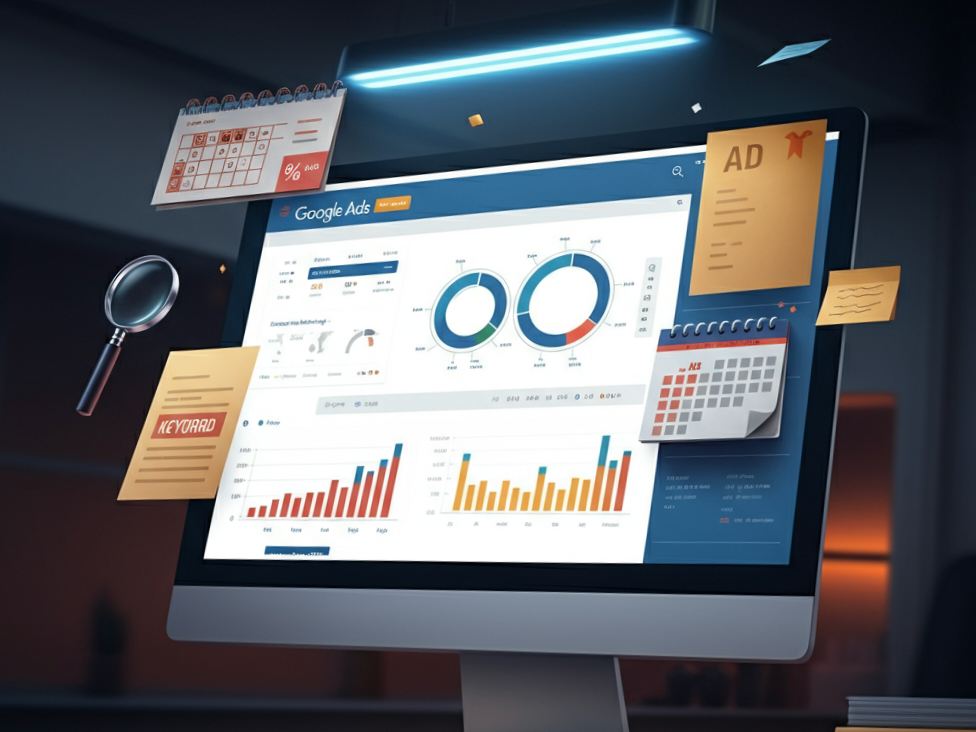For entrepreneurs and marketing beginners, breaking into the digital marketing world can feel overwhelming. With countless tools, strategies, and platforms available, it’s often challenging to determine where to start. That’s where Google Ads comes in.
Google Ads is one of the most effective ways to reach your audience, drive traffic, and grow your business. Whether you’re launching your first campaign or looking to build a strong digital marketing strategy, this beginner-friendly guide will provide you with the tools and insights you need to succeed.
Here’s what you’ll learn:
- The fundamentals of Google Ads and why it’s crucial for your business
- How to set up your first campaign
- Keyword selection, ad creation, and campaign optimization tips
- Advanced strategies to maximize your results
By the end, you’ll have the confidence to start running your own campaigns and generating results.
Why Google Ads Should Be Part of Your Digital Marketing Strategy
Google Ads is a pay-per-click (PPC) advertising platform that allows you to display targeted ads across Google’s search engine results and partner websites. But why is it critical for your digital marketing strategy?
- Unparalleled Reach
With billions of searches conducted on Google daily, your ads can connect with customers exactly when they’re looking for your products or services.
- Cost-Effective
You only pay when someone clicks on your ad. This ensures your budget is used efficiently to drive tangible results.
- Precise Targeting
Google Ads allows you to target users by location, demographics, interests, and even specific keywords. This precision ensures your ads reach the right audience at the right time.
- Scalability
Whether you’re a small business or a growing enterprise, you can start small and scale up as you see positive returns.
Step 1: Setting Up Your First Campaign
Getting started with Google Ads may seem daunting, but don’t worry—we’ll walk you through the process.
1.1 Create Your Google Ads Account
- Visit the Google Ads homepage.
- Click “Start Now” and sign in with your Google account.
- Complete the setup by entering your business and billing information.
1.2 Choose Your Campaign Objective
Select a goal that aligns with your business objectives—for example:
- Sales for driving online transactions.
- Leads for collecting customer information.
- Website Traffic to increase site visits.
1.3 Select a Campaign Type
Google Ads offers a variety of campaign formats, including:
- Search campaigns (text-based ads displayed on Google search results).
- Display campaigns (visual banners shown on partner websites).
- Shopping campaigns (for e-commerce stores to display products).
- Video campaigns (ads on YouTube).
For beginners, starting with a Search Campaign is usually the simplest and most effective option.
1.4 Set a Budget
Decide how much you’re willing to spend. Google Ads allows you to control daily spending to match your budget. Start small—$10 to $20 per day—and gradually increase your budget as you gain insights.
1.5 Define Your Target Audience
Refine your targeting by choosing specific locations, languages, and demographics. If you’re a local business, focus on reaching users near your area.
Step 2: Understanding Ad Groups and Keywords
Ad groups and keywords are the foundation of a well-structured Google Ads campaign.
2.1 Create Ad Groups
Ad groups allow you to organize your ads and keywords around specific themes. For instance, if you’re selling coffee products, one ad group could focus on “Espresso Machines,” while another targets “Coffee Beans.”
2.2 Choose Keywords Strategically
Keywords determine when your ads will appear in search results. Use Google’s Keyword Planner to find relevant keywords with high search volume and low competition.
Pro tip: Incorporate long-tail keywords (e.g., “best espresso machines under $500”). These tend to have lower competition and attract more qualified leads.
Step 3: Crafting Compelling Ads
Your ad copy determines whether users will click or scroll past your ad. Here’s how to make it irresistible:
3.1 Write a Click-Worthy Headline
- Highlight a benefit or solve a problem (e.g., “Brew Café-Quality Coffee at Home!”).
- Include your keyword to align with searches (e.g., “Affordable Espresso Machines”).
3.2 Create Engaging Descriptions
- Use action words like “Discover,” “Save,” and “Get.”
- Highlight unique features or offers (e.g., “Free Shipping on All Orders”).
3.3 Add a Strong Call to Action
Encourage users to take the next step with phrases like:
- “Shop Now”
- “Learn More”
- “Get Started Today”
Step 4: Managing Your Google Ads Account
Once your campaign is live, it’s time to monitor and optimize.
4.1 Use Performance Metrics
Key metrics to track include:
- CTR (Click-Through Rate): Measures how many users clicked your ad.
- Quality Score: A score Google assigns based on your ad relevance and landing page experience.
- Conversion Rate: The percentage of users who completed a desired action (e.g., purchase or sign-up).
4.2 Optimize for Better Results
- Pause underperforming keywords.
- Test different ad copy variations through A/B testing.
- Adjust bids to prioritize high-performing keywords.
Step 5: Measuring Success
To improve your campaigns, you need to understand how they’re performing.
Key Metrics to Monitor
- Impressions (how often your ad is shown).
- Clicks (how many users clicked on your ad).
- Cost-Per-Click (CPC) (average cost of each click).
- Return on Ad Spend (ROAS) (revenue generated relative to ad spend).
Use Conversion Tracking
Set up conversion tracking in Google Ads to measure specific actions such as sales or form submissions.
Step 6: Advanced Tips for Even Better Results
Once you’ve mastered the basics, consider these advanced strategies:
- Remarketing Target users who have previously visited your website with tailored ads.
- Audience Targeting Create custom audiences based on their interests and behaviors.
- Dynamic Ads Automatically generate ads that include the products or services in your inventory.
Build Your Business with Google Ads
Google Ads is your gateway to reaching the right audience, driving traffic, and growing your business. By following this guide, marketing beginners and entrepreneurs can launch effective campaigns with confidence.
If you’re ready to put these insights into action, start experimenting with your first campaign today. Remember, practice makes perfect—your results will improve as you continue to optimize and learn.
Stay updated with us: serpzilla.co.uk

